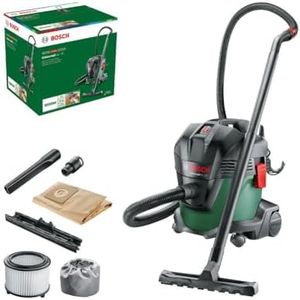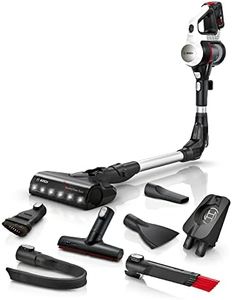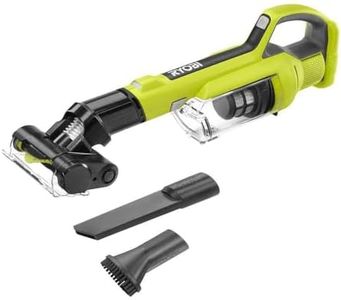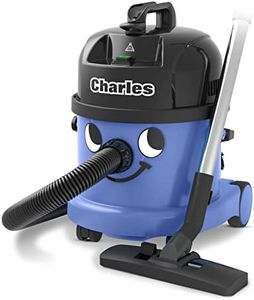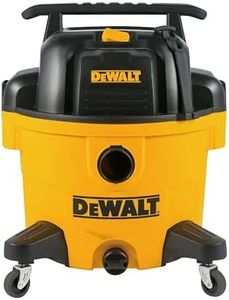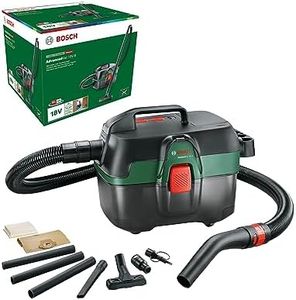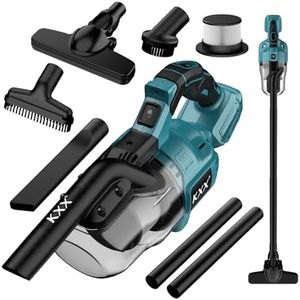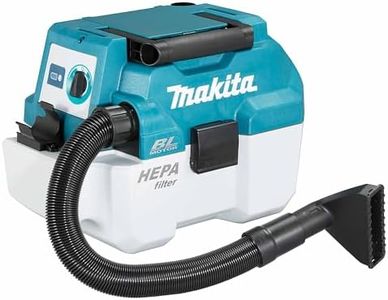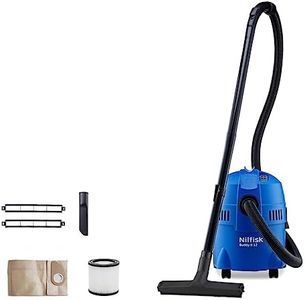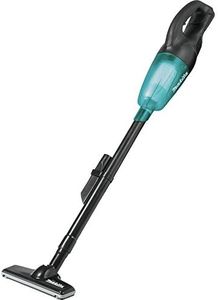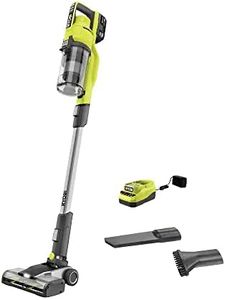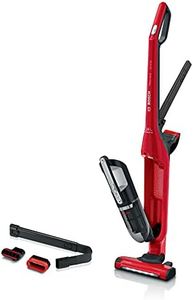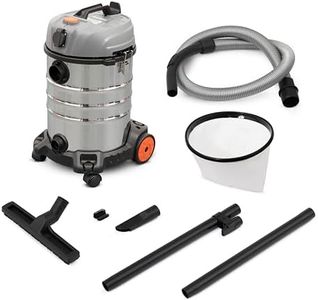We Use CookiesWe use cookies to enhance the security, performance,
functionality and for analytical and promotional activities. By continuing to browse this site you
are agreeing to our privacy policy
10 Best Garage Vacuums
From leading brands and best sellers available on the web.Buying Guide for the Best Garage Vacuums
When choosing a garage vacuum, it’s important to find a model that matches the kind of cleaning you need to do. Garages often have unique messes, like sawdust, dirt from cars, or even puddles, so the right vacuum will make clean-up fast and easy. Understanding different features helps make sure you don’t end up with something too weak, too heavy, or not suited for garage debris.Power (Suction Strength)Suction strength is a measure of how powerfully the vacuum can pick up debris. For garage use, this is critical because you’ll encounter heavier dirt, leaves, and sometimes even small gravel. Suction power is often stated in amps, horsepower, or air watts. Lower suction is fine for lighter tasks like dust, while medium power is good for most garage dirt. The highest suction is necessary if you’ll clean up wet messes or large debris. Think about how messy your garage can get and match the suction strength accordingly. If you work with woodworking or messy car projects, go higher; for lighter cleaning, a moderate level is fine.
Capacity (Tank Size)The tank size determines how much dirt, dust, or water the vacuum can hold before it needs to be emptied. Small tanks are lighter and easier to handle, good if you clean only small areas or don’t use the vacuum much. Medium tanks are more versatile, handling big cleaning jobs without getting too heavy. Large tanks are better if you have lots of debris or wet spills, but these can be bulky and harder to move around. Estimate how much cleaning you’ll do at one time – frequent, big messes mean a bigger tank is better.
Wet/Dry CapabilitySome garage vacuums can handle both dry debris (like dust or dirt) and wet messes (like spilled water or oil). If your garage is prone to spills or you work with liquids, a wet/dry model is valuable. If you only tidy up dry things, a standard dry-only vacuum might be all you need, and it could be lighter and more compact. Consider your usual garage messes to decide which capability you need.
Mounting Type (Wall-Mounted vs. Portable)Garage vacuums can be either fixed to the wall or portable. Wall-mounted models save floor space and are always ready to go, which is great if you clean your garage regularly and don’t want to drag a vacuum out every time. Portable units are more versatile, letting you move them anywhere, even outside the garage, but they can be heavier and need storage space. If you want a tidy setup or limited space, wall-mounted is ideal; if you sometimes want to use the vacuum elsewhere, portable is the way to go.
Hose Length and AccessoriesThe hose length affects how far you can reach without having to move the vacuum. Short hoses are easier to handle but might make you reposition the vacuum often, while long hoses cover more area but can be harder to manage and store. Accessories like different nozzles or brush attachments can make cleaning corners, cars, and workbenches much easier. Think about the layout of your garage and the variety of surfaces you’ll clean to decide what hose length and accessories you’ll find most useful.
Filtration SystemFiltration is about how well the vacuum captures dust and prevents particles from escaping back into the air. Basic filters are fine for larger debris, but if you have allergies or deal with fine dust or sawdust, look for models with higher-grade or HEPA filters. These trap finer particles and keep the air cleaner. Consider your sensitivity to dust and the types of messes you create—frequent, dusty work benefits from better filtration.
Noise LevelSome vacuums can be very loud, which might be a problem if you use it often or have neighbors nearby. Quieter models make cleaning less disturbing, but sometimes more powerful vacuums are a bit louder. If noise is a concern, look for vacuums with sound-dampening features, but if you’re not bothered, you might prioritize other specs instead.
